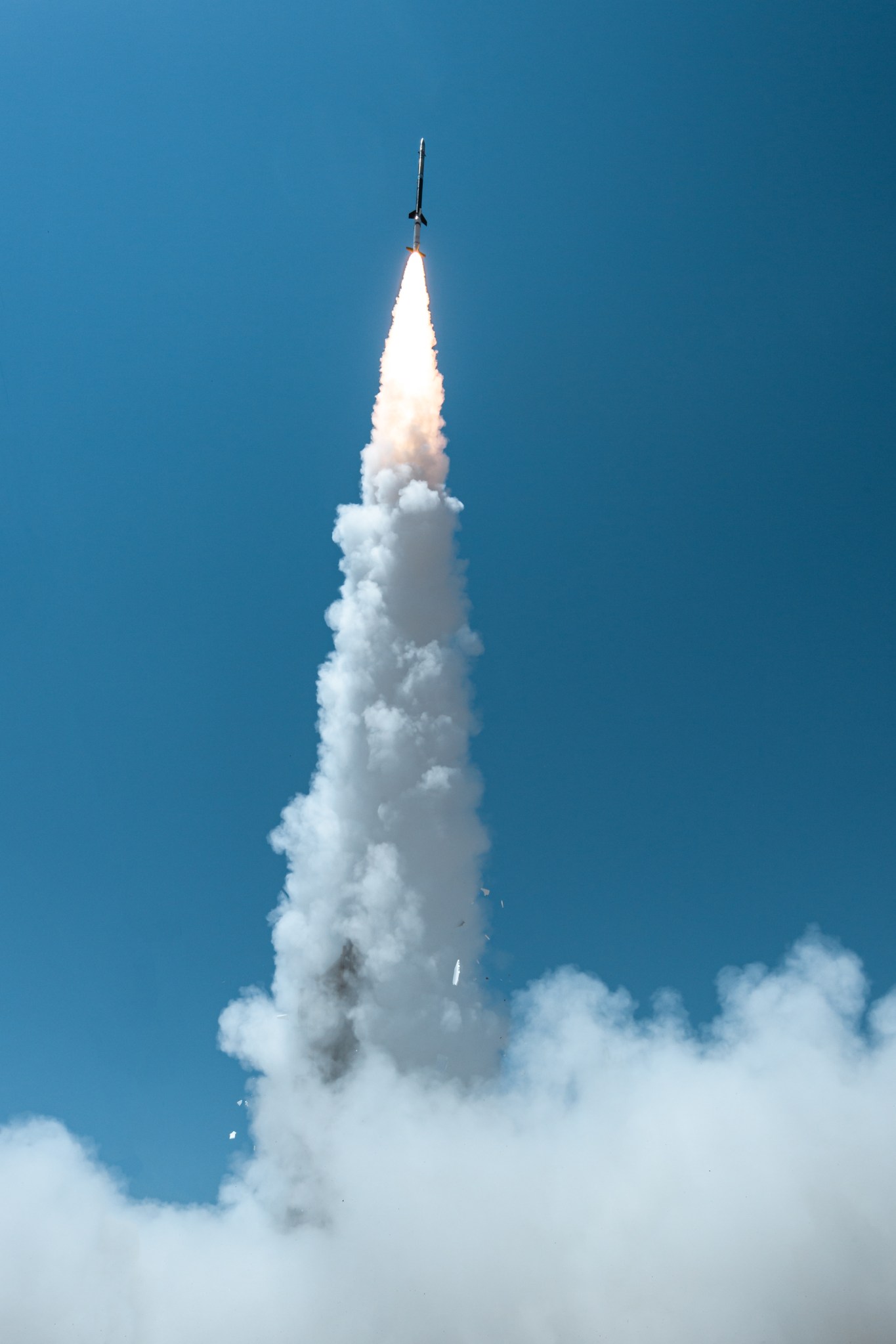NASA Sounding Rocket Launches, Studies Heating of Sun’s Active Regions

4 min readPreparations for Next Moonwalk Simulations Underway (and Underwater)
By Wayne Smith
Investigators at NASA’s Marshall Space Flight Center in Huntsville, Alabama, will use observations from a recently-launched sounding rocket mission to provide a clearer image of how and why the Sun’s corona grows so much hotter than the visible surface of Earth’s parent star. The MaGIXS-2 mission – short for the second flight of the Marshall Grazing Incidence X-ray Spectrometer – launched from White Sands Missile Range in New Mexico on Tuesday, July 16.
NASA’s MaGIXS-2 sounding rocket mission successfully launched from White Sands Missile Range in New Mexico on July 16. United States Navy
The mission’s goal is to determine the heating mechanisms in active regions on the Sun by making critical observations using X-ray spectroscopy.
The Sun’s surface temperature is around 10,000 degrees Fahrenheit – but the corona routinely measures more than 1.8 million degrees, with active regions measuring up to 5 million degrees.
Amy Winebarger, Marshall heliophysicist and principal investigator for the MaGIXS missions, said studying the X-rays from the Sun sheds light on what’s happening in the solar atmosphere – which, in turn, directly impacts Earth and the entire solar system.
X-ray spectroscopy provides unique capabilities for answering fundamental questions in solar physics and for potentially predicting the onset of energetic eruptions on the Sun like solar flares or coronal mass ejections. These violent outbursts can interfere with communications satellites and electronic systems, even causing physical drag on satellites as Earth’s atmosphere expands to absorb the added solar energy.
“Learning more about these solar events and being able to predict them are the kind of things we need to do to better live in this solar system with our Sun,” Winebarger said.
The NASA team retrieved the payload immediately after the flight and has begun processing datasets.
“We have these active regions on the Sun, and these areas are very hot, much hotter than even the rest of the corona,” said Patrick Champey, deputy principal investigator at Marshall for the mission. “There’s been a big question – how are these regions heated? We previously determined it could relate to how often energy is released. The X-rays are particularly sensitive to this frequency number, and so we built an instrument to look at the X-ray spectra and disentangle the data.”
The MaGIXS-2 sounding rocket team stand on the launchpad in White Sands, New Mexico prior to launch on July 16, 2024. United States Navy
Following a successful July 2021 launch of the first MaGIXS mission, Marshall and its partners refined instrumentation for MaGIXS-2 to provide a broader view for observing the Sun’s X-rays. Marshall engineers developed and fabricated the telescope and spectrometer mirrors, and the camera. The integrated instrument was exhaustively tested in Marshall’s state-of-the-art X-ray & Cryogenic Facility. For MaGIXS-2, the team refined the same mirrors used on the first flight, with a much larger aperture and completed the testing at Marshall’s Stray Light Test Facility.
A Marshall project from inception, technology developments for MaGIXS include the low-noise CCD camera, high-resolution X-ray optics, calibration methods, and more.
Winebarger and Champey said MaGIXS many of the team members started their NASA careers with the project, learning to take on lead roles and benefitting from mentorship.
“I think that’s probably the most critical thing, aside from the technology, for being successful,” Winebarger said. “It’s very rare that you get from concept to flight in a few years. A young engineer can go all the way to flight, come to White Sands to watch it launch, and retrieve it.”
NASA routinely uses sounding rockets for brief, focused science missions. They’re often smaller, more affordable, and faster to design and build than large-scale satellite missions, Winebarger said. Sounding rockets carry scientific instruments into space along a parabolic trajectory. Their overall time in space is brief, typically five minutes, and at lower vehicle speeds for a well-placed scientific experiment.
The MaGIXS mission was developed at Marshall in partnership with the Smithsonian Astrophysical Observatory in Cambridge, Massachusetts. The Sounding Rockets Program Office, located at NASA Goddard Space Flight Center’s Wallops Flight Facility, provides suborbital launch vehicles, payload development, and field operations support to NASA and other government agencies.
Jonathan DealMarshall Space Flight Center, Huntsville, [email protected]
Lane FigueroaMarshall Space Flight Center, Huntsville, [email protected]
Share
Details
Last Updated
Jul 18, 2024
LocationMarshall Space Flight Center
Related TermsMarshall Space Flight CenterSounding RocketsSounding Rockets ProgramWallops Flight Facility
Explore More
15 min read
The Marshall Star for July 17, 2024
Article
2 days ago
4 min read
NASA Marshall Engineers Unveil Versatile, Low-cost Hybrid Engine Testbed
Article
7 days ago
15 min read
The Marshall Star for July 10, 2024
Article
1 week ago
Keep Exploring
Discover More Topics From NASA
Sounding Rockets
For over 40 years the Sounding Rocket Program has provided critical scientific, technical, and educational contributions to the nation’s space…
White Sands Test Facility
Sun
Overview The Sun’s gravity holds the solar system together, keeping everything – from the biggest planets to the smallest particles…
Wallops Flight Facility
Welcome to Billionaire Club Co LLC, your gateway to a brand-new social media experience! Sign up today and dive into over 10,000 fresh daily articles and videos curated just for your enjoyment. Enjoy the ad free experience, unlimited content interactions, and get that coveted blue check verification—all for just $1 a month!
Account Frozen
Your account is frozen. You can still view content but cannot interact with it.
Please go to your settings to update your account status.
Open Profile Settings